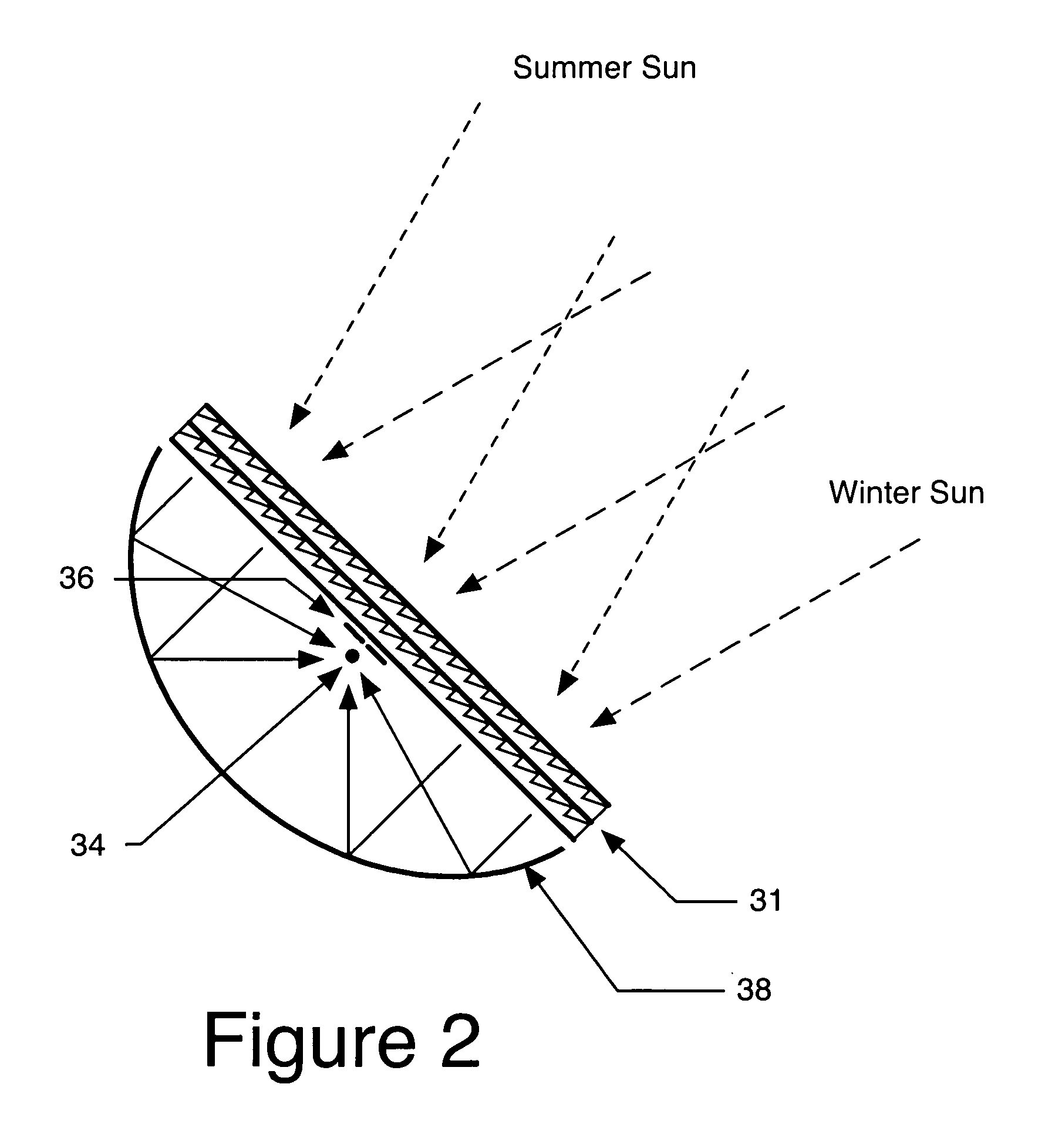Motion-free tracking solar concentrator
a solar concentrator and motion-free technology, applied in the direction of instruments, polarising elements, lighting and heating apparatuses, etc., can solve the problems of high total mass, high cost, and large number of mechanical drives, so as to improve reliability, design and construction of support structures, and resist wind vibration. , the effect of improving reliability
- Summary
- Abstract
- Description
- Claims
- Application Information
AI Technical Summary
Benefits of technology
Problems solved by technology
Method used
Image
Examples
Embodiment Construction
Introduction
[0064]The collection and concentration of solar energy is a fundamental component in many heating, power generation, and daylighting applications. A first application is solar water heating. This is often accomplished by circulating water in a length of conduit, both ends of which connect to a holding tank. Solar radiation is concentrated on a section of the conduit, which gradually warms the water in the tank as the water in the conduit circulates.
[0065]A second application is the production of electric power using photovoltaic cells. Many applications involve a large-area device which collects the radiation and concentrates it onto a small photovoltaic cell which is specially designed to handle high power density. The point is to lower overall cost by reducing the area of expensive photovoltaic cells by incorporating relatively low-cost solar concentrators.
[0066]A third application is fiberoptic daylighting. This refers to the process of collecting visible radiation fr...
PUM
 Login to View More
Login to View More Abstract
Description
Claims
Application Information
 Login to View More
Login to View More - R&D
- Intellectual Property
- Life Sciences
- Materials
- Tech Scout
- Unparalleled Data Quality
- Higher Quality Content
- 60% Fewer Hallucinations
Browse by: Latest US Patents, China's latest patents, Technical Efficacy Thesaurus, Application Domain, Technology Topic, Popular Technical Reports.
© 2025 PatSnap. All rights reserved.Legal|Privacy policy|Modern Slavery Act Transparency Statement|Sitemap|About US| Contact US: help@patsnap.com



